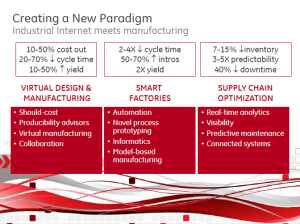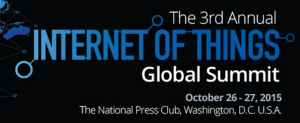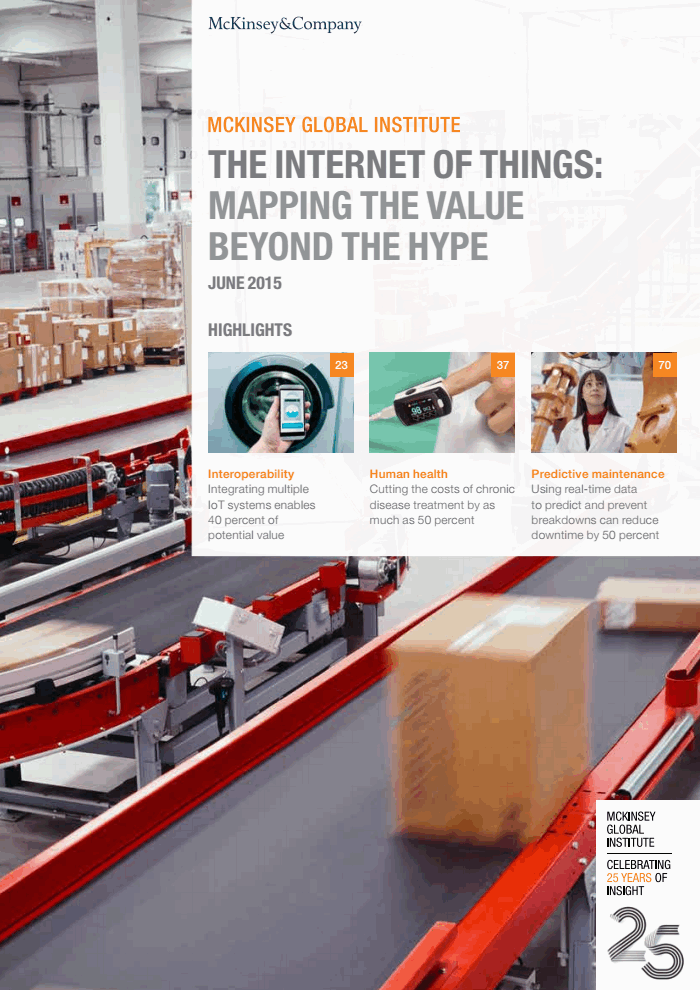I’m up first this morning, & hope to lift attendees’ vision of what can be achieved with the Internet of Things: sure, cool devices and greater efficiency are great, but there’s so much more: how about total transformation of businesses and the economy, to make them more creative, precise, and even environmentally sustainable?
I’ve just revised my 4 IoT Essential Truths, the heart of my presentation, bumping make privacy and security the highest priority from number 4 to number 1 because of the factors I cited last week. I’ll draw on my background in crisis management to explain to the engineers in attendance, who I’ve found have a problem with accepting fear because it isn’t fact-based, how losing public trust could kill the IoT Golden Goose.
I’ll go on to explain the three other Essential Truths:
- Share Data (instead of hoarding it, as in the past)
- Close the Loop (feed that data back so there are no loose ends, and devices become self-regulating
- Rethink Products so they will contain sensors to feed back data about the products’ real-time status, and/or can now be marketed not as products that are simply sold, but services that both provide additional benefits to customers while also creating new revenue streams for the manufacturer.
I’ll stress that these aren’t just truisms, but really difficult paradigm shifts to accomplish. They’re worth it, however, because making these changes a reality will allow us to leave behind old hierarchical and linear organizational structures that made sense in an age of limited and hard-t0-share data. Instead, we can follow the lead of W.L. Gore and its cyclical “lattice management,” in which — for the first time — everyone can get the real-time data they need to do their jobs better and make better decisions. Equally important, everyone can share this data in real time, breaking down information silos and encouraging collaboration, both within a company and with its supply chain and distribution network — and even with customers.
Amen.
Back with Michael Lynch of SAP!
- we can change the world and enhance our understanding greater than ever.
- can help us solve global warming.
- great case study on heavy truck predictive maintenance in GoldCorp Canadian gold mines.
- IoT maturity curve:
- Critical question: who are you in a connected future? Can lead to re-imaginging your corporate role.
- UnderArmour is now embedding monitors into clothing.
- Tennant makes cleaning equipment. Big problem with lost machines, now can find them quickly.
- Asset Intelligence Network — Facebook for heavy equipment — SAP will launch soon.
- example of a tractor company that’s moving to a “solutions-based enterprise.” What is the smallest increment of what you do that you could charge customer. Like the turbine companies charging for thrust.
SAP strategy:
- “Our solution strategy is to grow by IoT-enabling core industry, and providing next generation solutions for millions of human users, while expanding our platform market by adding devices.”
- they have an amazing next-gen. digital platform. More data flow through there than Alibaba & Amazon!
- CenterPoint Energy — correlating all sorts of data such as smart meter & weather. Better forecasting.
- Doing a new home-based diabetes monitoring system with Roche.
- Doing a lot of predictive maintenance.
- Connected mining.
- Building blocks:
- Connect (SAP IoT Starter Kit)
- Transform
- Re-imagine
Ending the day with my presentation on first steps for companies to take in beginning an IoT strategy, with special emphasis on applying analytical tools such as HANA to your current operations, and building “precision operations” by giving everyone who needs it real-time data to improve their job performance and decision-making. Much of the presentation will focus on GE, with its “Brilliant Factories” initiative!
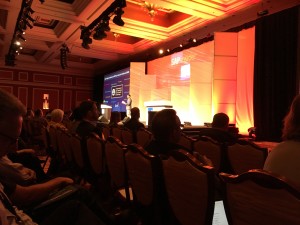
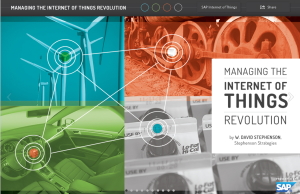 This is an issue that I first visited with my “
This is an issue that I first visited with my “